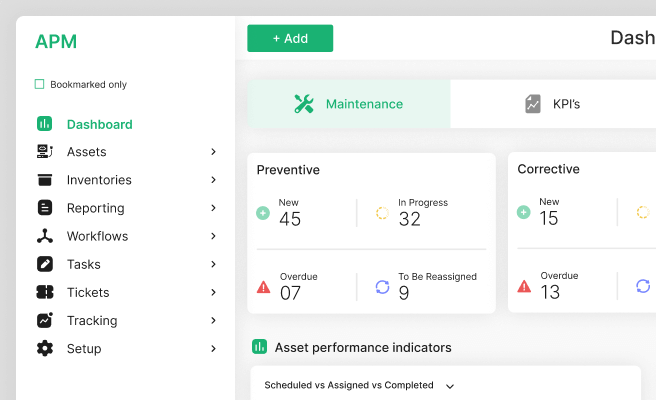Revenue Growth Rate
<p>The revenue growth rate is a critical financial metric that indicates the percentage increase or decrease in a company's revenue over a specific period. It is essential for evaluating the company's financial health, understanding market trends, and making informed business decisions. By analyzing the revenue growth rate, stakeholders can assess a company's performance, predict future growth, and identify potential challenges.</p>
<p>Historically, the revenue growth rate has been used by investors and management teams to gauge the effectiveness of business strategies and operational efficiency. For example, during the tech boom of the late 1990s, high revenue growth rates were often seen as indicators of a company's potential for long-term success.</p>
<h2 id="importance-of-revenue-growth-rate">Importance of Revenue Growth Rate</h2>
<p>The revenue growth rate is essential for several reasons:</p>
<ul>
<li><b>Investor Confidence:</b> Consistent revenue growth can attract investors and increase stock prices.</li>
<li><b>Market Position:</b> It helps in understanding a company's competitive position in the market.</li>
<li><b>Operational Efficiency:</b> A positive growth rate often indicates effective management and operational strategies.</li>
<li><b>Future Planning:</b> Companies use growth rates to plan future expansions, investments, and resource allocations.</li>
</ul>
<h3 id="calculating-revenue-growth-rate">Calculating Revenue Growth Rate</h3>
<p>The revenue growth rate is typically calculated using the following formula:</p>
<p><i>Revenue Growth Rate (%) = [(Current Period Revenue - Previous Period Revenue) / Previous Period Revenue] * 100</i></p>
<p>For instance, if a company had a revenue of $1 million last year and $1.2 million this year, the revenue growth rate would be:</p>
<p><i>Revenue Growth Rate (%) = [($1.2 million - $1 million) / $1 million] * 100 = 20%</i></p>
<h2 id="factors-affecting-revenue-growth-rate">Factors Affecting Revenue Growth Rate</h2>
<p>Several factors can influence a company's revenue growth rate:</p>
<ul>
<li><b>Market Conditions:</b> Economic downturns or booms can impact consumer spending and business investments.</li>
<li><b>Competitive Landscape:</b> Increased competition can affect market share and revenue.</li>
<li><b>Product Innovation:</b> Introducing new products or services can drive revenue growth.</li>
<li><b>Marketing Strategies:</b> Effective marketing can attract new customers and increase sales.</li>
<li><b>Operational Efficiency:</b> Streamlining operations can reduce costs and improve profitability, indirectly boosting revenue growth.</li>
</ul>
<h3 id="real-world-example-tesla">Real-World Example: Tesla</h3>
<p>Tesla has demonstrated significant revenue growth over the past decade. By focusing on innovative products like electric vehicles and expanding into new markets, Tesla has achieved a high revenue growth rate. External factors such as government incentives for electric vehicles and increased consumer interest in sustainable transportation have also contributed to their growth. For more insights, you can visit <a href="https://www.tesla.com">Tesla's official website</a>.</p>
<h2 id="challenges-in-maintaining-revenue-growth">Challenges in Maintaining Revenue Growth</h2>
<p>While achieving a high revenue growth rate is beneficial, maintaining it can be challenging due to:</p>
<ul>
<li><b>Market Saturation:</b> Eventually, companies may reach a point where further growth is limited due to market saturation.</li>
<li><b>Operational Scalability:</b> Scaling operations to support growth can be complex and costly.</li>
<li><b>Regulatory Changes:</b> Changes in regulations can impact revenue streams, especially in highly regulated industries.</li>
<li><b>Economic Fluctuations:</b> Economic downturns can reduce consumer spending and affect revenue.</li>
</ul>
<h2 id="strategies-to-enhance-revenue-growth">Strategies to Enhance Revenue Growth</h2>
<p>Companies can adopt several strategies to enhance their revenue growth rate:</p>
<ul>
<li><b>Market Expansion:</b> Entering new markets or regions can provide additional revenue streams.</li>
<li><b>Product Diversification:</b> Offering a diverse range of products can attract a broader customer base.</li>
<li><b>Customer Retention:</b> Implementing loyalty programs and improving customer service can increase repeat business.</li>
<li><b>Technological Advancements:</b> Investing in technology can streamline operations and introduce innovative products.</li>
<li><b>Strategic Partnerships:</b> Collaborating with other companies can provide new opportunities for growth.</li>
</ul>
<h3 id="case-study-patagonia">Case Study: Patagonia</h3>
<p>Patagonia, a company known for its commitment to sustainability, has effectively used product diversification and market expansion to achieve consistent revenue growth. By offering a wide range of eco-friendly products and expanding into new markets, Patagonia has increased its revenue while maintaining its core values. More details can be found on <a href="https://www.patagonia.com">Patagonia's official website</a>.</p>
<h2 id="conclusion">Conclusion</h2>
<p>The revenue growth rate is a vital metric for assessing a company's performance and planning for future growth. By understanding the factors that influence growth and implementing effective strategies, companies can achieve sustainable revenue growth. For further reading, consider exploring additional resources on financial metrics and business strategies.</p> <p>To understand the power of design across industries and sectors, view our diverse portfolio of works. <a href="https://www.whatifdesign.co/work" style="color:#2896FF; text-decoration:underline;">View our portfolio</a>.</p> <p>Increase user engagement that converts your demos into sales. Optimise your UX strategies with our audits.
<p>Fill out the <a href="https://tally.so/r/n97pxQ" style="color:#2896FF; text-decoration:underline;">UX Audit form</a> to get started. Ready to discuss your needs? <a href="https://cal.com/akhilak/what-if-design?duration=25" style="color:#2896FF; text-decoration:underline;">Book a consultation call</a> with us today.</p></p>

Let's scale your impact with great design.
Free consultation, no sales pitch
Thank you! Your submission has been received!
Oops! Something went wrong while submitting the form.
Let’s talk
Nothing great is built alone.
Let’s connect about your vision, our work and how we can collaborate.
Get in touch

